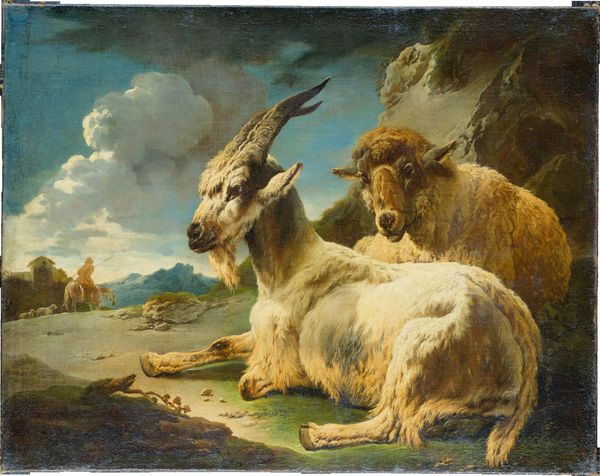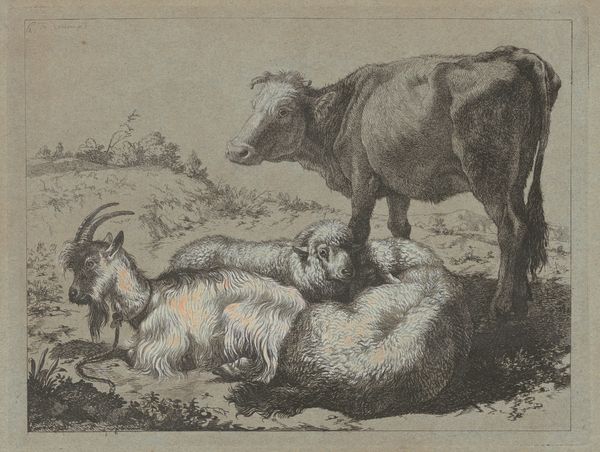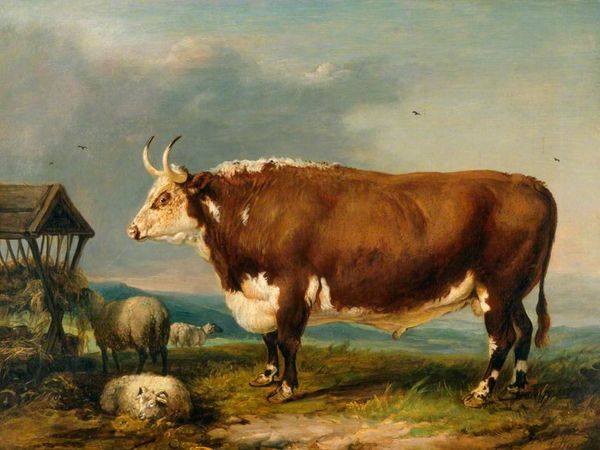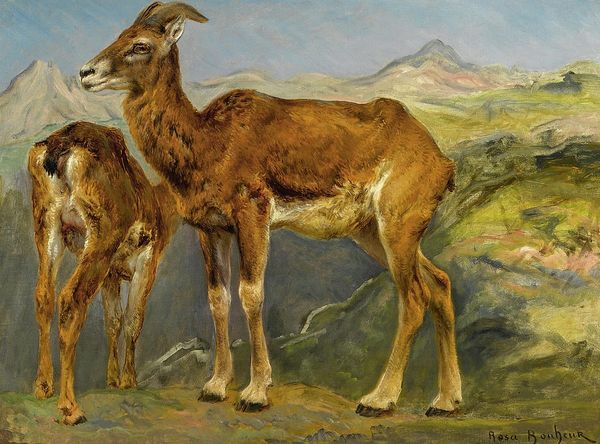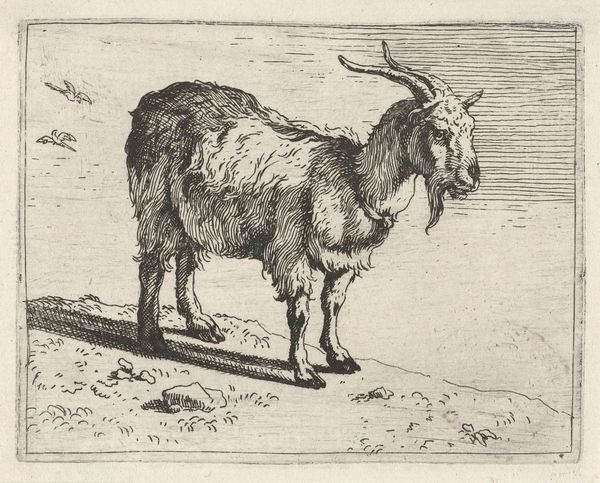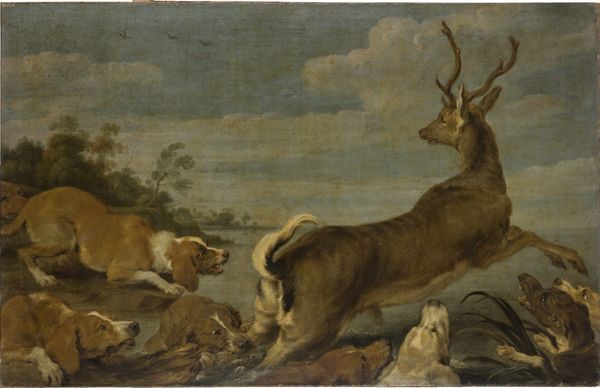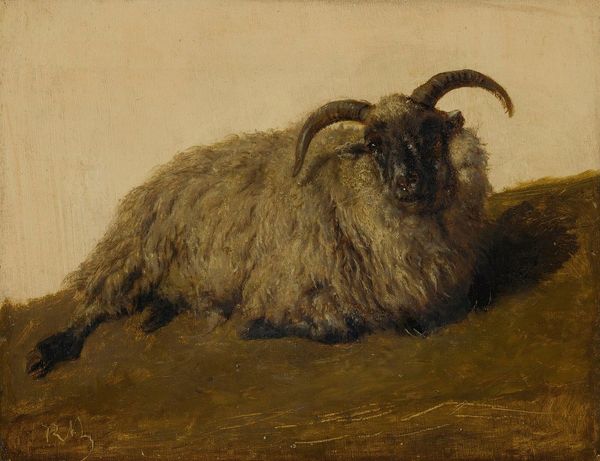
painting, oil-paint, canvas
#
painting
#
oil-paint
#
landscape
#
oil painting
#
canvas
#
romanticism
#
genre-painting
#
watercolor
#
realism
Dimensions: 92.5 cm (height) x 116.5 cm (width) (Netto)
Curator: Ah, here we have Christian Holm’s “Goats in the Alps,” painted in 1834. What are your initial thoughts on this work? Editor: Immediately, I notice this stillness, this quietude. The composition, the somber tones—it creates an introspective mood, as though reflecting on the solitude inherent in landscape, in being. Curator: I appreciate your emotional reading of the color scheme. Holm, here, masters a subtle but definite hierarchy within the picture plane by use of browns against cooler mountain blues. Note how that placement emphasizes the goats’ posture—the main animal dominates visually. His confident stature provides the perfect subject of animal portraiture. Editor: Agreed. But I wonder how much of that posture is tied to the larger societal obsession of Romanticism—an elite and individual subject standing above the untamed wilderness? I can’t help thinking of questions around land use, property, and ownership that are present but certainly not as visually obvious as this dominant animal. Curator: Undoubtedly the themes of ownership that defined art and patronage at the time echo within Holm's focus on depicting the material textures: the goat's coat, the rugged rockface of the mountains, and the clear visual focus which indicates the visual weight of what someone valued in 1834. But you cannot deny the superb technical skill in how those individual material aspects blend within the pictorial space. Look closely and the background haziness is constructed out of various layered strokes which makes what should feel distant feel much closer. Editor: I certainly see it. Yet, I find myself thinking about the goats themselves. Beyond compositional weight, were there other functions here? We might discuss labor, class dynamics, the pressures of rural economies on animal populations… were animals simply livestock at the time, or partners? Was this something the artist aimed to portray or suggest? I find them staring beyond the viewer. Curator: True. We can't escape that there may be many potential stories these animals tell from their fixed place within the artist’s landscape of that period. Yet, through close analysis of his artistic choices, we can understand more of Holm's project here—the beautiful, skillful observation, the romantic portrayal. Editor: And equally, to engage the cultural narratives around Romanticism itself and probe its connection to ownership, and consider this snapshot in relation to today’s climate consciousness. Thanks to Holm's enduring scene we can now pose many rich questions today.
Comments
No comments
Be the first to comment and join the conversation on the ultimate creative platform.

